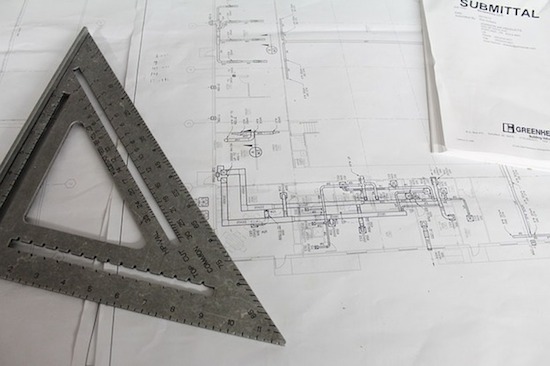As a professional painter, one of the most important skills you can learn is how to read blueprints. Blueprints are essential for understanding the layout of a painting project, and they can help you plan your work in advance. Here are some tips for reading blueprints:
First, take a look at the overall blueprint to get an idea of the big picture. Then, focus on specific areas and look for details that will be relevant to your work. For example, pay attention to window and door openings, as well as any other areas where you’ll need to cut in or apply trim.
When you’re ready to start painting, refer back to your blueprint often to make sure you’re working according to plan. With a little practice, reading blueprints will become second nature and will help you paint more efficiently and effectively!
- Examine the blueprint to determine the dimensions of the area to be painted
- Calculate the amount of paint needed to cover the area, using a standard formula or online calculator
- Select a type of paint based on the surface to be painted and desired finish (e
- , glossy, matte)
- Choose colors for the paint job, keeping in mind any existing colors in the room and your personal preferences
- Follow the instructions on the paint can label for proper application techniques (e
- , how many coats to apply)

Credit: craftjack.com
-What are the Different Types of Blueprints
-What are the uses of blueprints
If you need a quick refresher on what blueprints are, they are simply a drawing or set of drawings that provides detailed instructions for how to build something. Blueprints can be used for anything from homes and buildings to machines and engines.
There are two main types of blueprints: orthographic and isometric.
Isometric blueprints, on the other hand, use angled lines to give the illusion of three dimensions on a two-dimensional surface. These are typically used for more complex objects such as buildings or large machinery. Blueprints serve a variety of purposes depending on their intended audience.
For example, construction workers will useblueprints to build homes and other structures according to the specified design. Engineers may useblueprints when developing new products or machines in order to visualize the end result before beginning production. In short, blueprints provide a clear and concise way to communicate complex ideas so that they can be realized in physical form.
HOW TO – BLUEPRINT READING FOR CONSTRUCTION/PAINTING ESTIMATING / HOW how to read blueprint
Conclusion
If you’re planning on painting a room in your house, it’s important to know how to read blueprints in order to get an accurate estimate of the amount of paint you’ll need. Here are some tips on how to do just that:
First, take a look at the blueprint and identify the dimensions of the room – length, width, and height.
Next, determine the type of paint finish you’ll be using – either flat or semi-gloss. Finally, calculate the square footage of each wall by multiplying the length by the height.
Once you have all of this information, simply multiply the square footage by 0.0069 for flat paint or 0.0109 for semi-gloss paint to determine how many gallons (or liters) you’ll need to cover the entire surface area.
With these simple steps, reading blueprints for painting is a breeze!